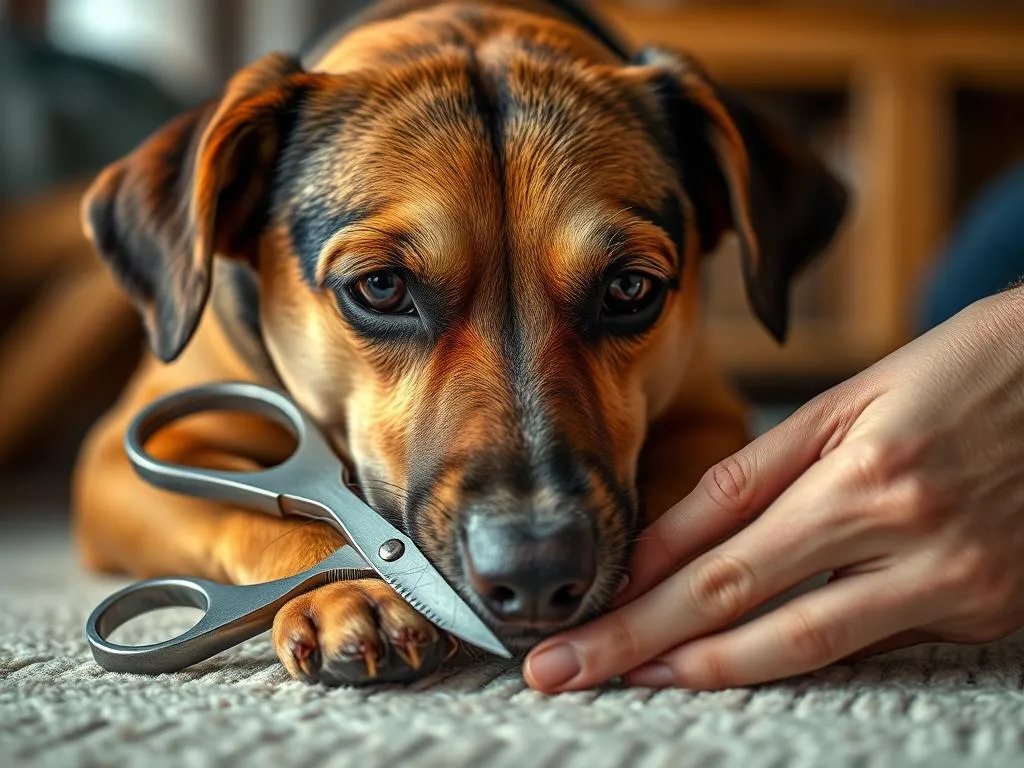
Introduction
Maintaining your dog’s health is crucial for their longevity and overall well-being. One often-overlooked aspect of dog health care is nail trimming. Regular nail trimming is essential not only for aesthetics but also for your dog’s comfort and mobility. How to trim dog nails at home is a valuable skill that can save you money, build trust between you and your furry friend, and ensure they remain comfortable in their daily activities.
Understanding Dog Nail Care
Importance of Nail Trimming
Overgrown nails can lead to various health issues for your dog. Long nails can cause discomfort while walking, leading to changes in their gait. This change can result in joint problems or injuries over time. Additionally, if nails grow too long, they can split or break, which can lead to painful injuries or infections.
Nail trimming is not just about aesthetics; it plays a significant role in your dog’s overall health. Regularly trimmed nails help maintain proper paw function and prevent the discomfort associated with overgrown nails.
Anatomy of Dog Nails
Understanding the anatomy of your dog’s nails is crucial for safe trimming. A dog’s nails consist of several parts:
- Quick: The sensitive, pink area inside the nail that contains blood vessels and nerves.
- Nail bed: The area where the nail grows from, which is more sensitive in some breeds.
Different breeds may have varying nail growth patterns and sensitivities. For instance, lighter-colored nails make it easier to see the quick, while darker nails can be more challenging. Familiarizing yourself with your dog’s nail structure can help you avoid cutting the quick during trimming.
Preparing for Nail Trimming
Tools You Will Need
Before you start, gather the necessary tools. Here’s what you’ll need:
- Nail clippers: There are various types, including scissors-type, guillotine-type, and electric grinders. Choose one that feels comfortable for you to use.
- Nail grinders: These can be less intimidating for some dogs and allow for a smoother finish, but they take longer to use.
- Styptic powder or cornstarch: This is essential for emergencies in case you accidentally cut the quick and your dog starts to bleed.
Creating a Comfortable Environment
Setting the right environment is key to a successful nail trimming session.
- Pick a quiet, well-lit location where your dog feels safe—this can be on the floor or a sturdy table.
- Minimize distractions by turning off the TV or playing calming music.
- Before the session, expend some of your dog’s energy with a short walk or playtime. This can help them relax during the trimming process.
Assessing Your Dog’s Comfort Level
Understanding your dog’s comfort level is vital. Watch for signs of anxiety or discomfort, such as whining, pulling away, or trying to escape. If your dog shows these signs, consider gradually desensitizing them to the nail-trimming process. Start by letting them sniff the clippers, rewarding them with treats, and gradually introducing the trimming process over several days.
Step-by-Step Guide on How to Trim Dog Nails at Home
Getting Your Dog in Position
Positioning your dog correctly is essential for both their comfort and your safety.
- For small breeds: You can hold them in your lap or place them on a low table.
- For large breeds: Have them sit or lie down on a non-slippery surface. Consider using a leash to keep them still if needed.
Make sure to keep a firm yet gentle grip to prevent sudden movements.
Identifying the Quick
Identifying the quick is crucial to avoid causing pain.
- Light-colored nails: You’ll see a pink area (the quick) within the nail. Trim the nail just before this area.
- Dark nails: This can be trickier. Trim in small increments, and look for a chalky white ring around the quick.
If you cut too close to the quick, your dog may yelp or pull away. Take your time to ensure you’re cutting safely.
Trimming Techniques
When you’re ready to start trimming, follow these steps:
- Hold the clippers/grinder correctly: Position the clippers at a 45-degree angle to the nail.
- Apply gentle pressure: Start with small cuts, especially if your dog is new to this.
- Trim one nail at a time: Be patient and calm throughout the process. If your dog seems nervous, take breaks.
Aftercare Post-Trimming
Once you’ve finished trimming, inspect your dog’s nails and paw pads for any signs of distress or injury.
- Clean any debris around the paw pads.
- Reward your dog with treats and praise to reinforce positive behavior.
- Monitor your dog for any signs of discomfort or bleeding. If you notice bleeding, apply styptic powder or cornstarch to stop it.
Troubleshooting Common Issues
Dealing with Fear or Resistance
If your dog is fearful or resistant to nail trimming, here are some tips:
- Use desensitization techniques, such as letting your dog see and sniff the clippers before using them.
- Offer treats and praise during and after the process to create a positive association with nail trimming.
Handling Accidental Quick Cuts
Accidentally cutting the quick can happen, even to the most experienced groomers. If this occurs, remain calm and take immediate first aid steps:
- Apply styptic powder or cornstarch to the bleeding nail.
- Hold pressure until the bleeding stops.
- If bleeding doesn’t stop within a few minutes, consult your veterinarian.
Adjusting Technique for Different Breeds
Different breeds may require specific techniques for nail trimming:
- Small breeds: They may be more sensitive; shorter, frequent trims can help.
- Large breeds: Their nails are thicker and may require more pressure when cutting.
- Senior dogs: If your dog has health issues, consult with your vet for tailored advice.
When to Seek Professional Help
Signs That Professional Grooming is Necessary
There are times when it’s best to seek professional help for nail trimming:
- If your dog exhibits extreme anxiety or aggression during trimming.
- If they have health conditions that may affect their nails, such as arthritis.
Finding a Qualified Groomer
When choosing a professional groomer, consider the following:
- Look for a groomer with experience in handling dogs of your breed.
- Ask about their approach to nail trimming, especially regarding anxious dogs.
- Read reviews or ask for recommendations from other dog owners.
Additional Dog Health Care Tips
Regular Health Check-Ups
Routine veterinary visits are essential for maintaining your dog’s health. During these check-ups, your veterinarian can monitor your dog’s overall condition, including their nails, and provide advice tailored to their specific needs.
Maintaining Overall Dog Health
To keep your dog healthy, focus on:
- Nutrition: Provide a balanced diet tailored to your dog’s age, breed, and activity level.
- Exercise: Regular physical activity helps maintain a healthy weight and muscle tone.
- Dental care: Regular brushing and dental check-ups can prevent serious health issues.
Don’t forget the importance of mental stimulation through play and training. This not only keeps your dog happy but can also improve their behavior during grooming sessions.
Conclusion
Regular nail trimming is an integral part of your dog’s health care routine, impacting their mobility, comfort, and overall well-being. By following the techniques discussed, you can ensure a safe and effective nail trimming experience for your dog. Building trust through grooming can strengthen your bond, making the process enjoyable for both of you. Remember, a little patience and practice can go a long way in maintaining your dog’s health and happiness.









